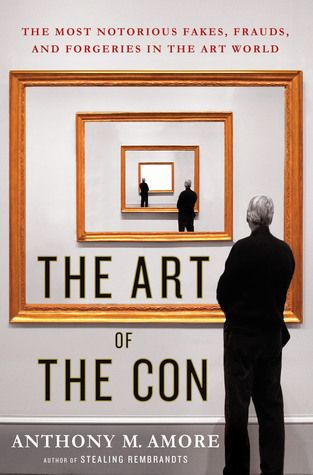What do you think?
Rate this book


264 pages, Hardcover
First published July 14, 2015
Instead, it seems far more probable that she was intoxicated by the prospect of being part of the unleashing of a heretofore unknown collection on the world, just as so many others who have been duped by clever con men were. That’s not to say she was acting altruistically: ego, greed, and acclaim were also possible components of what seemed like an ardent desire to believe that the unlikely was fact.People, even experts, believe what they want to believe (see Shermer).
From a criminal prosecution perspective, the D.A.’s office had a mountain of evidence against Salander, and he, like so many scammers, knew he faced an opponent he could not beat. In 2010, with new district attorney Cyrus Vance in office, Salander pleaded guilty to stealing over $120 million from investors and art owners.Go Vance! Next scammer...T!
If anyone should seek my advice about collecting,” he said, “I’d quickly point out the old truth—buy only what you like. Measure a work by the joy and satisfaction it will bring.”I have that opinion about anything someone says is valuable - like baseball cards, for instance: they're only worth what someone is willing to pay for them. But if you like them...they're worth more to you than to me, and that's exactly all right.
Picasso himself once said that “it is not enough to know an artist’s works. One must also know when he did them, why, how, in what circumstances . . . I attempt to leave as complete a documentation as possible for posterity.”I learn about music composition and love to know the history of what was happening at the time in the world and in the composer's life. Same with art and literature. It helps me understand the works more. Or in some cases, a fraction, working toward the "more".
When an attorney for Princess told the New York Times that Mitchell benefited from the exposure her counterfeited works received onboard their ships, her attorney retorted, “Princess is so twisted it thinks that mass distribution of unauthorized, forged copies of artists’ works on their ships helps artists.”That's even worse than restaurants and businesses telling artists that free exposure is good.